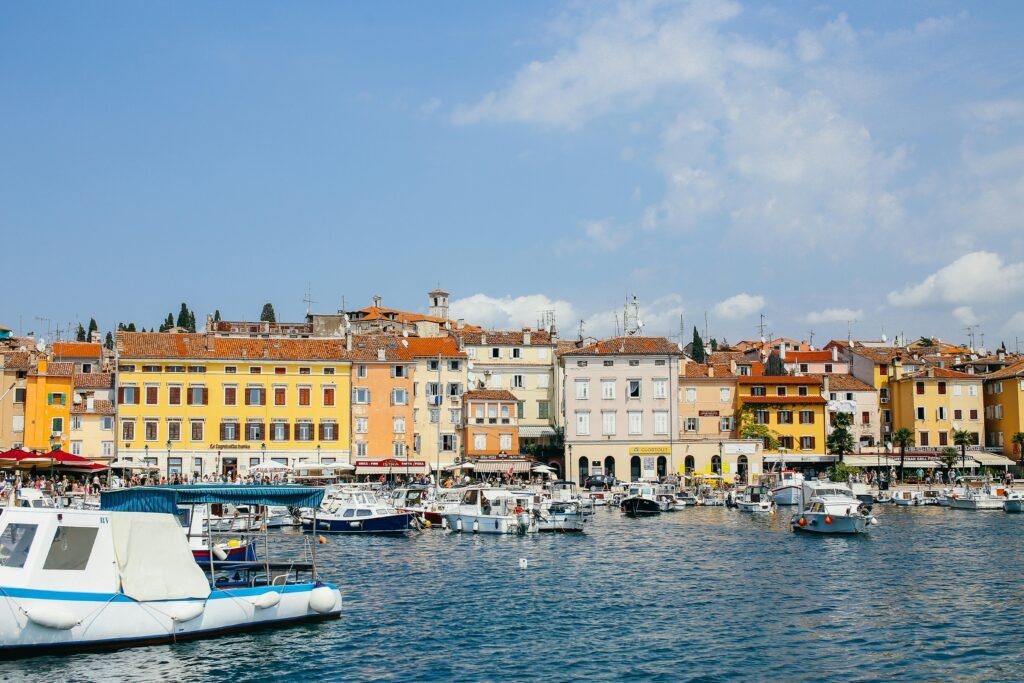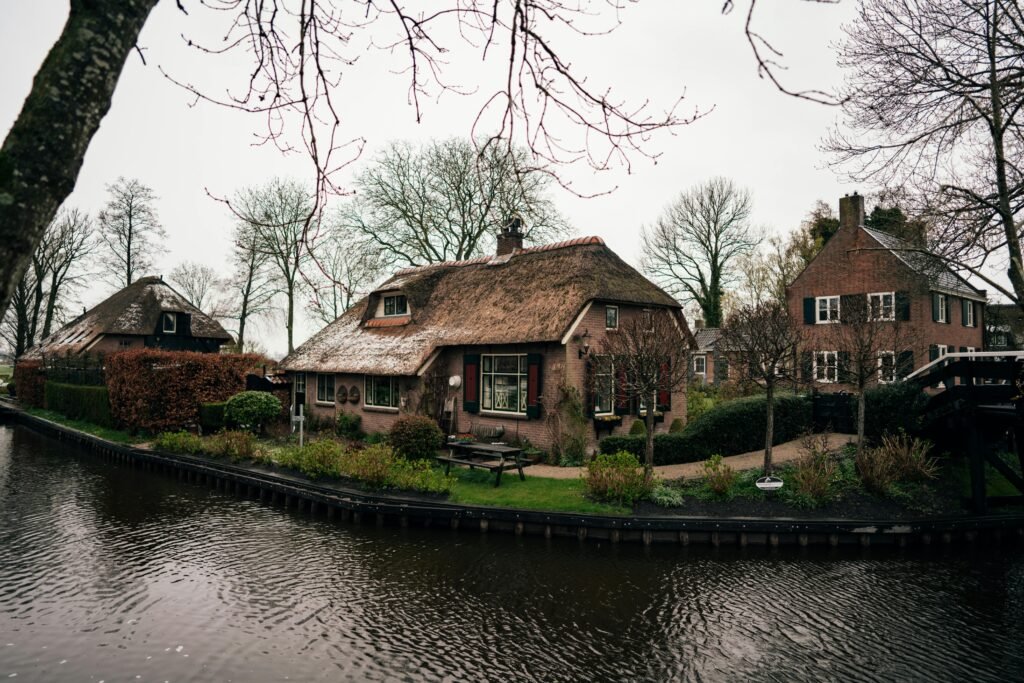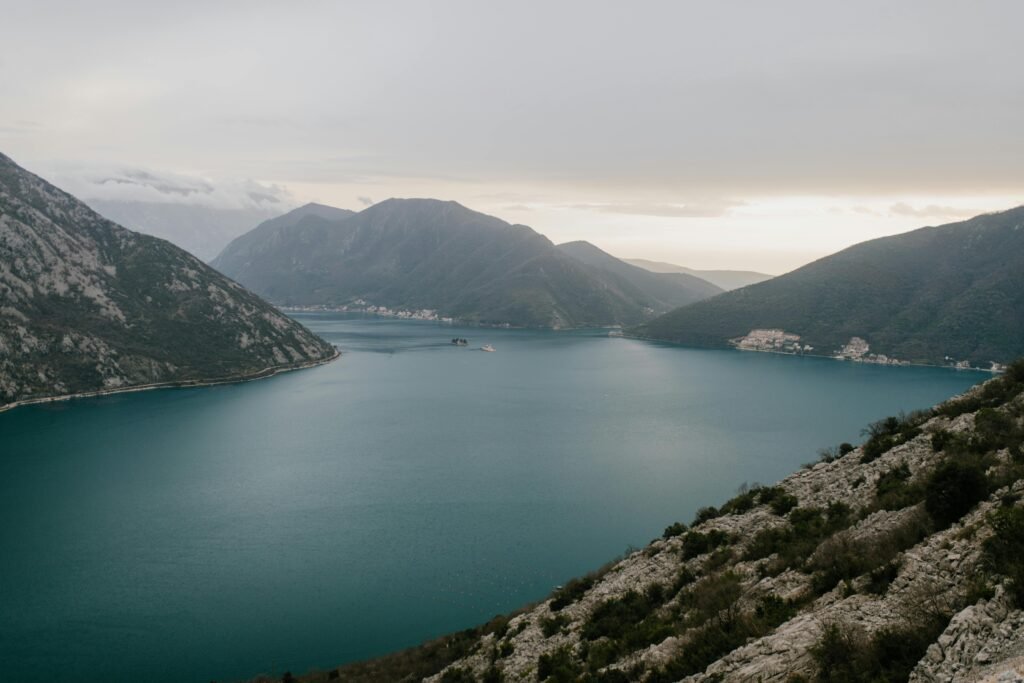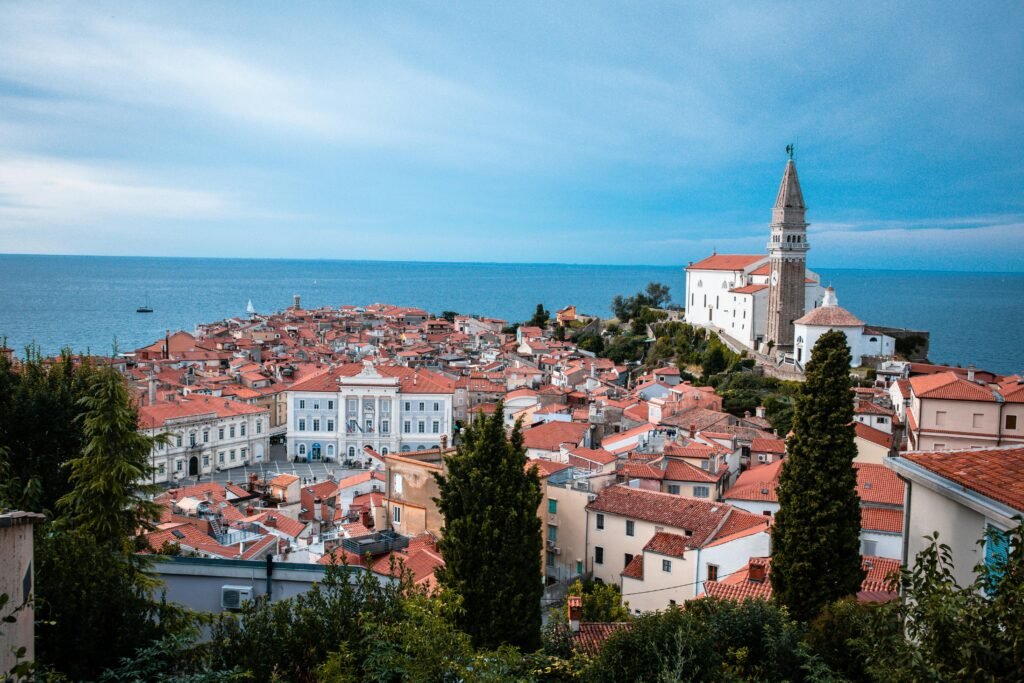Introduction to Europe’s Hidden Gems
Europe is a continent rich in history, culture, and breathtaking landscapes, drawing millions of visitors to its most famous cities and monuments. However, amidst the bustling metropolises and renowned tourist hotspots, lie numerous small towns that encapsulate the charm and allure of authentic European experiences. These small towns, often referred to as ‘hidden gems,’ offer a refreshing escape from the well-trodden paths and provide a unique glimpse into local life.

One of the primary advantages of visiting these lesser-known destinations is the ability to avoid large crowds. Popular tourist attractions can often be overwhelming, leading to a less enjoyable experience. In contrast, small towns tend to offer a more intimate atmosphere, where visitors can appreciate the sights and sounds at a leisurely pace. This tranquility allows for meaningful interactions with residents, fostering a deeper understanding of the region’s culture and traditions.
Additionally, exploring these hidden gems provides an opportunity to discover the stunning landscapes and diverse architecture that may not be prominent in guidebooks. From quaint village squares to breathtaking vistas, these small towns often display unique characteristics that reflect their history and heritage. Wandering through cobblestone streets and discovering charming cafes or artisanal shops can be an enriching experience, filled with surprises at every turn.
Ultimately, stepping off the beaten path to visit these enchanting locations not only broadens one’s travel horizons but also enhances the overall journey. Whether it’s witnessing a local festival or savoring traditional cuisine, the memories created in these hidden gems will be cherished long after the trip concludes. As we delve into seven remarkable small towns, we invite you to uncover the beauty and charm that Europe’s hidden gems have to offer.
Colmar, France: A Fairytale Town
Colmar, a charming town situated in the Alsace region of northeastern France, is often regarded as a hidden gem of Europe. Known for its beautifully preserved half-timbered houses adorned with vibrant colors, Colmar exudes a picturesque ambiance that transports visitors to a fairytale setting. The town’s architecture reflects a rich blend of French and German influences, a testament to its historical significance. Walking through its cobblestone streets feels like stepping into a storybook, with each corner revealing delightful surprises.
One of the standout attractions in Colmar is the enchanting Little Venice area. This picturesque district features winding canals lined with quaint houses and lush greenery, providing the perfect backdrop for a leisurely stroll or a boat ride. The canal-side cafés serve as excellent spots to savor Alsatian wines while soaking in the serene atmosphere. As visitors explore the town, they will encounter numerous art galleries and boutiques, showcasing local artisans’ craftsmanship.
The Unterlinden Museum is another must-visit site for those interested in art and history. Housed in a former Dominican church, the museum boasts a remarkable collection, including the renowned Isenheim Altarpiece. This cultural institution offers a glimpse into the region’s artistic heritage and is a fantastic complement to the town’s architectural beauty.
For culinary enthusiasts, Colmar does not disappoint. Local delicacies such as tarte flambée—a delicious thin crust topped with cream, onions, and bacon—offer a taste of the region’s culinary tradition. Pair it with a glass of Alsatian white wine, and one experiences the unique flavors that this area has to offer. When visiting, it is advisable to explore during the off-peak seasons to enjoy a quieter experience and to fully appreciate the enchanting atmosphere of Colmar.

Rovinj, Croatia: A Coastal Paradise
Rovinj, a picturesque coastal town located on the western coast of Croatia, is celebrated for its stunning views, charming streets, and rich cultural heritage. The vibrant waterfront is lined with colorful buildings that reflect the town’s historical ties to both Italian and Croatian cultures, creating an enchanting atmosphere that draws visitors year-round.
At the heart of Rovinj lies its old town, characterized by cobblestone streets, narrow alleys, and well-preserved architecture. A notable landmark is the Church of St. Euphemia, a baroque masterpiece that towers above the town, providing panoramic views of the Adriatic Sea and the surrounding landscape. This iconic church, built in the 18th century, is dedicated to the town’s patron saint and serves as a focal point for both tourists and locals alike.
The vibrant arts scene in Rovinj is another aspect that enhances its appeal. Numerous galleries showcase the works of local artists, while cultural events and festivals take place throughout the year, celebrating music, film, and literature. This artistic spirit creates a dynamic environment that complements the town’s breathtaking setting.
For outdoor enthusiasts, Rovinj boasts beautiful sun-soaked beaches that are perfect for relaxation, swimming, and enjoying water sports. The nearby protected parks, such as the Golden Cape Forest Park, offer an array of activities, including hiking, bird-watching, and cycling through picturesque landscapes laden with Mediterranean flora.
Culinary experiences in Rovinj are equally remarkable. Visitors can indulge in local seafood dishes, sample traditional Istrian cuisine, and enjoy fine wines produced in the surrounding vineyards. The combination of rich flavors and fresh ingredients provides a unique taste of the region.

Ultimately, Rovinj is a coastal paradise that seamlessly blends history, culture, and natural beauty. Its vibrant atmosphere, architectural marvels, and stunning coastline make it a must-visit destination for those exploring the hidden gems of Europe.
Giethoorn, Netherlands: The Venice of the North
Giethoorn is a picturesque village in the Netherlands renowned for its serene canals and charming thatched-roof houses, often referred to as the “Venice of the North.” This unique destination, located in the province of Overijssel, is predominantly free of roads, which allows for a peaceful ambiance that attracts both nature lovers and those seeking a tranquil escape. Visitors can explore the picturesque waterways using traditional wooden boats known as “punters.” This mode of transportation offers a leisurely way to admire the scenic beauty of the surrounding countryside and the quaint architecture of the village.
One of the defining features of Giethoorn is its commitment to preserving local traditions. Traveling through its waterways, visitors can immerse themselves in the serene lifestyle that has characterized this village for centuries. The absence of noisy traffic, coupled with the gentle lapping of the water against the boats, creates a sense of tranquility that is often hard to find in bustling urban settings. The village is also home to numerous small shops and cafes that offer visitors a taste of regional cuisine and handcrafted goods, providing opportunities to engage with local culture.
Aside from its enchanting canals, Giethoorn offers a variety of outdoor activities perfect for every traveler. Walking or cycling along the scenic paths that line the waterways presents visitors with picturesque views of the lush landscapes. Nearby, you can find attractions such as the Weerribben-Wieden National Park, which is rich in biodiversity and ideal for hiking, bird-watching, and photography. Giethoorn thus serves as a gateway to an exploration of the natural beauty that the region has to offer, ensuring a memorable experience. This small village, with its unique charm and tranquil waterway systems, truly stands out as a hidden gem in Europe.

Sibiu, Romania: A Cultural Hub
Sibiu, located in the heart of Transylvania, is a remarkable small town in Romania that enchants visitors with its medieval architecture and rich cultural heritage. This historical gem, once the capital of the Principality of Transylvania, boasts well-preserved squares and charming narrow streets that transport you back to a bygone era. The architecture reflects a blend of Gothic, Renaissance, and Baroque styles, with the grand Brukenthal Palace standing as one of the town’s iconic landmarks, housing an impressive art collection and museum.
The town’s cultural significance is further highlighted by its vibrant annual events, particularly the Sibiu International Theatre Festival. Attracting artists and audiences from around the globe, this festival transforms the town into a living stage, celebrating the performing arts with a diverse program that showcases theatre, dance, and music. Cultural exchanges fostered by this festival create an atmosphere of unity and creativity, symbolizing Sibiu’s role as a cultural hub in Romania.
Food lovers will find delight in Sibiu’s culinary scene, where traditional Romanian dishes take center stage. Visitors should not miss trying ‘ciorbă’, a sour soup often complemented by fresh bread. Local eateries offer a warm atmosphere, where the hospitality of the locals enhances the dining experience. For those eager to explore beyond the town, the nearby Făgăraș Mountains provide an excellent backdrop for hiking and outdoor adventures, while the fortified churches dotting the landscape tell tales of the region’s history.
Ultimately, Sibiu captures the essence of Romanian culture, combining stunning architecture, rich traditions, and a vibrant community. The blend of history, artistry, and warm hospitality makes it a must-visit destination for anyone looking to uncover the hidden gems of Europe.

Kotor, Montenegro: A Jewel of the Adriatic
Kotor, located on the stunning Adriatic coast in Montenegro, is often described as a microcosm of Mediterranean beauty and cultural richness. This picturesque town is nestled within a dramatic fjord-like bay, surrounded by imposing mountains that accentuate its breathtaking scenery. Designated a UNESCO World Heritage Site, Kotor boasts a remarkable assembly of medieval architecture, with its maze of cobbled streets and well-preserved buildings dating back to the Venetian period. The town’s vibrant history is palpable as visitors explore its well-documented landmarks, including the impressive Kotor Cathedral and the ancient city walls that ascend the surrounding hills.
Outdoor enthusiasts will find a variety of adventures awaiting them in Kotor. One of the most popular activities is hiking to the fortress that overlooks the town. The ascent offers stunning panoramic views of the bay, rewarding hikers with visual splendor upon reaching the top. The winding paths provide a glimpse into the immaculate landscapes and rich biodiversity of the region, making it an exhilarating experience for nature lovers.
The cultural offerings in Kotor are equally compelling. The town is renowned for its local cuisine, which offers an array of traditional Montenegrin dishes that reflect its Mediterranean roots. Diners can indulge in freshly caught seafood, locally sourced produce, and an array of fine wines that complement the exquisite dishes. Additionally, Kotor hosts numerous festivals throughout the year, showcasing its vibrant tradition of music, art, and folklore, allowing visitors to immerse themselves in the local culture.

In conclusion, Kotor is not just a travel destination; it is an experience that encapsulates the essence of the Adriatic. With its rich history, stunning scenery, and inviting culture, Kotor stands as a must-visit gem on any European itinerary.
Piran, Slovenia: An Enchanting Seaside Town
Piran is a picturesque seaside town located on the Adriatic coast of Slovenia, renowned for its stunning coastal views and rich cultural heritage. This charming destination boasts well-preserved Venetian architecture, which reflects the historical influence of the Venetian Republic. The narrow, winding streets and vibrant buildings create an inviting atmosphere, making Piran a delightful place for visitors to wander and explore. One of the town’s highlights is Tartini Square, named after the famous 18th-century violinist Giuseppe Tartini, who was born here. The square serves as a central hub for activities, surrounded by striking architecture that encapsulates the essence of Piran.
Culinary experiences in Piran are not to be missed, as the town is celebrated for its fresh seafood and local delicacies. The traditional Slovenian cuisine features Mediterranean influences, allowing visitors to sample dishes made from locally sourced ingredients. Restaurants lining the waterfront offer delicious meals, complemented by stunning views of the Adriatic Sea. Additionally, food enthusiasts may explore local markets where they can find regional products, from olive oil to artisanal cheeses, providing a taste of Slovenia’s culinary landscape.
For those seeking outdoor adventure, Piran offers a variety of activities, including swimming and diving in the crystal-clear waters of the Adriatic. Visitors can explore nearby caves, enhancing their experience with nature’s wonders. The coastal promenade is perfect for leisurely strolls, where one can absorb the vibrant atmosphere of this enchanting town. Piran’s blend of history, culture, and natural beauty makes it a noteworthy destination, showcasing why it deserves a spot on any travel itinerary for those looking to uncover the hidden gems of Europe.

Ronda, Spain: A Cliffside Marvel
Nestled in the heart of Andalusia, Ronda is a town that captivates with its dramatic landscape and rich history. Perched atop a gorge, Ronda offers breathtaking views that are sure to enchant every visitor. The town is famously divided by the El Tajo gorge, which plunges nearly 120 meters, providing a stunning backdrop that is often regarded as one of Europe’s most picturesque settings.
One of Ronda’s iconic landmarks is the Puente Nuevo, a monumental bridge completed in 1793 that connects the two sides of the gorge. Standing at an impressive height, the bridge not only serves as a vital connection but also as an extraordinary viewpoint for those looking to marvel at the gorge below. The architectural elegance of the Puente Nuevo reflects the rich history of Ronda, showcasing the town’s commitment to preserving its heritage.
In addition to the bridge, visitors to Ronda can explore its ancient bullring, Plaza de Toros, which dates back to the late 18th century. Considered one of the oldest bullrings in Spain, it is a significant cultural site that delves into the traditional art of bullfighting. Tours of the bullring allow guests to learn about this deeply-rooted custom, providing insights into the local culture.
To truly experience Ronda’s vibrant atmosphere, a stroll through its quaint streets is recommended. The town is lined with charming tapas bars, where visitors can indulge in traditional Andalusian dishes, such as jamón ibérico and gazpacho, paired with local wines. These establishments not only serve delicious food but also embody the warm hospitality of the region. By engaging with local culinary traditions, visitors gain a deeper appreciation for Ronda’s unique blend of history and natural beauty.

Planning Your Visit to Europe’s Hidden Gems
To truly appreciate the hidden gems of Europe, thorough planning is essential. These unique small towns offer travelers a distinct experience away from the bustling tourist hotspots. One of the best times to visit is during the shoulder seasons, specifically spring (April to June) and autumn (September to October). During these months, the weather is generally mild, and the crowds are thinner, allowing for a more intimate experience with the town’s culture and traditions.
Transportation varies significantly depending on your chosen destination. While larger towns may have direct train or bus routes, some of the smaller hidden gems might require a car rental for easy access. Using public transportation is also a viable option; many small towns are equipped with regional bus services that connect them to nearby attractions. Be sure to check local timetables and consider purchasing a regional pass for convenience and savings.
Accommodation options can range from quaint bed and breakfasts to boutique hotels that showcase local charm. Websites like Airbnb can also provide unique stays in the homes of locals, enhancing your overall experience. It’s advisable to book accommodations ahead of time, especially during peak travel periods or local festivals, foreseeing higher demand.
Furthermore, embracing local customs and traditions greatly enriches one’s visit. Engage with residents to gain insights into their lifestyle, try local cuisines at family-owned restaurants, and participate in community events when possible. Understanding and respecting the cultural nuances of these hidden gems fosters genuine connections and provides a deeper appreciation of these small towns. With thoughtful planning, travelers can fully immerse themselves in the enchanting allure of Europe’s lesser-known locales.



